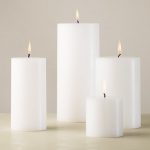Most of you know that my hair changes with the liturgical (church) season. On Sunday I can point at the paraments (the fabric decorations on the alter) and my stole (the sash I wear), and say “you see, my hair matches!”
Which is all well and good – unless the phrase “liturgical season” is totally foreign to you – and if it is don’t worry, you’re not alone!
So here’s the low-down on the church season:
Advent – Blue

This is the season when we are preparing for Christmas – for the birth of Jesus! The color blue represents hope, as we hopefully and excitedly wait for the birth of our Lord.
Christmas/Epiphany/Easter – White/Gold
These seasons are the season of Christmas, the month after Christmas (Epiphany), and the season of Easter. The color white represents purity, joy, light, and glory, as these are some of the most celebratory times in our churches.
Lent/Maundy Thursday – Purple/Violet
Lent is the season before Easter, as we prepare ourselves for Jesus’s journey to the cross. The night we celebrate the first Lord’s Supper, Maundy Thursday, often is signified by purple (and sometimes black). The purple represents, penance, preparation, and sacrifice. Lent is the most solemn season of the liturgical calendar.
Good Friday – Black
On Good Friday we mourn the death of Jesus on the cross, because of that the color for the day is black, which symbolizes death and mourning.
Pentecost/Holy Days – Red
The very short season of Pentecost as well as individual holy days (like Reformation Sunday) are signified by the color red, which represents blood, fire, and passion. Particularly for Pentecost, the red represents the fire of the Holy Spirit being poured out onto the apostles.
Ordinary/Growing/Time After Pentecost – Green
The time after Pentecost is known as many things, primarily it is known as “Ordinary time” or the “Growing Season”, and often simply as the time after Pentecost. It is the longest season in the church year, and focuses on Jesus’s public ministry in the world. The color green symbolizes, hope, new growth, and life.
And so there you have it! The main seasons and colors of the church, otherwise known as the liturgical season. So now when your liturgically haired pastor’s color changes, you’ll know why! (Or at least you’ll know why that particular color!)
Do you have a “Pastor Explains” question you think would make a great blog? Contact us to get your question answered on the next “Pastor Explains”






Leave a Reply